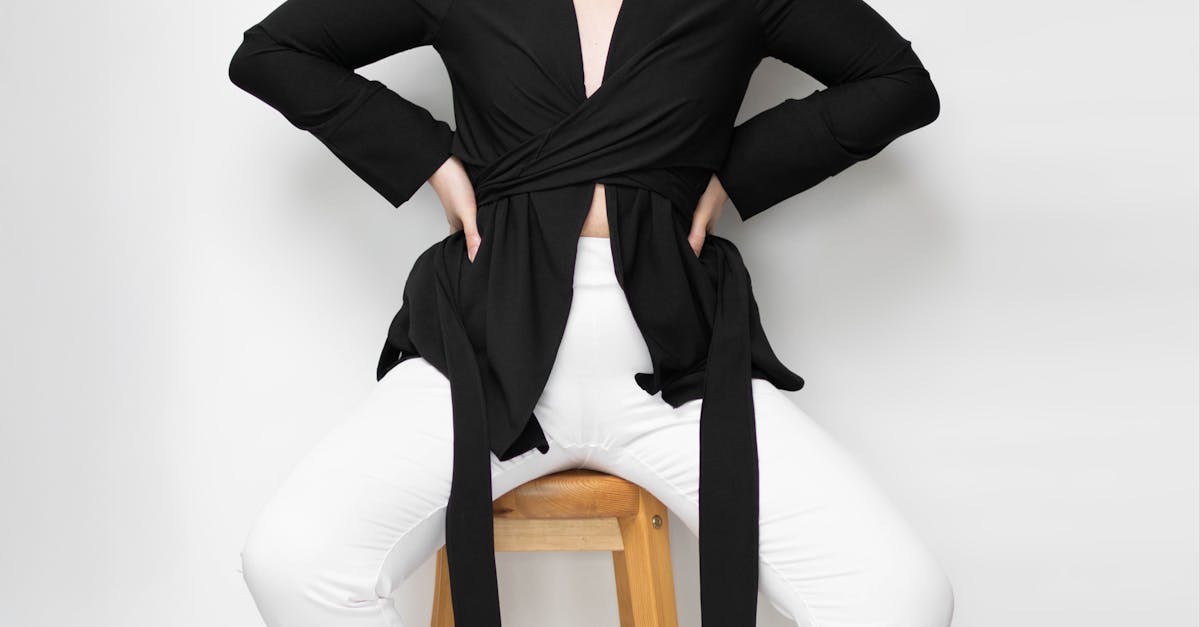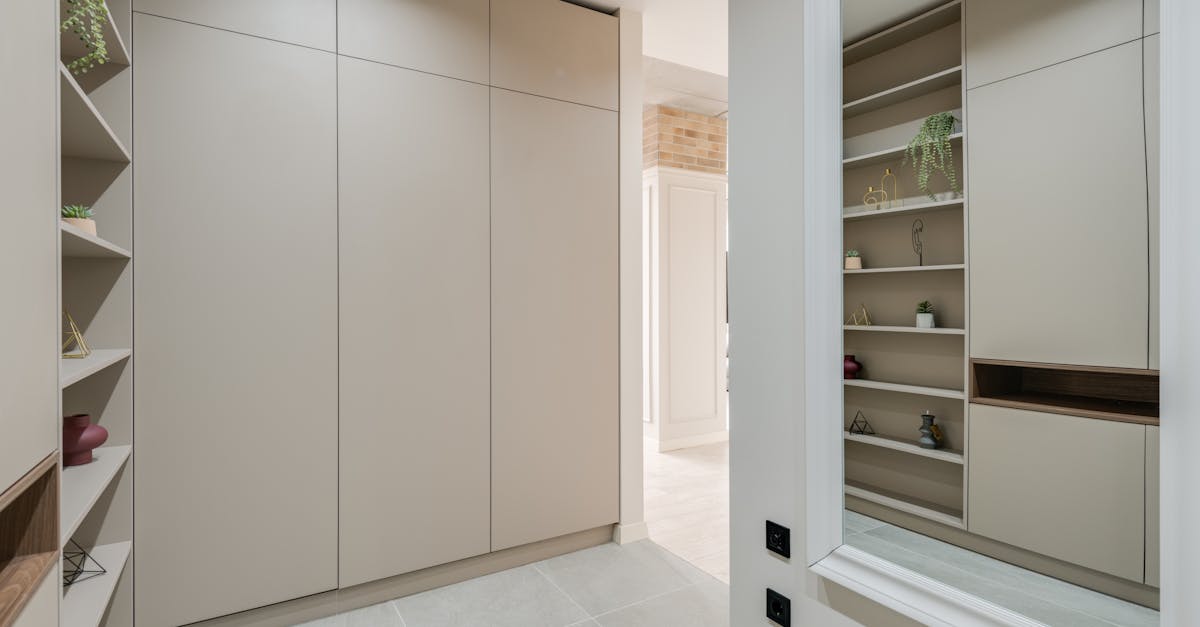
Table Of Contents
Dark Colours for a Dramatic Effect
Dark colours can transform built-in wardrobes into striking focal points in a room. Shades like deep navy, charcoal grey, or rich burgundy add an element of sophistication and create a strong visual impact. These hues work particularly well in larger spaces where they can create contrast against lighter or more neutral surroundings. When used thoughtfully, dark colours can give the impression of elegance and depth, enhancing the overall aesthetic of the bedroom layout.
For those concerned about the potential of dark shades overwhelming a space, strategic design elements can maintain a balanced atmosphere. Incorporating mirrors or metallic accents can reflect light, making the area feel more open. Using built-in wardrobes with vertical lines or integrating shelving can break up solid surfaces, adding dimension without losing the dramatic edge provided by darker colours. Choosing the right lighting is also crucial, as warm tones can soften the effect of the deep hues while ensuring the space doesn’t feel too enclosed.
How to Use Dark Shades without Overwhelming the Space
Using dark shades in built-in wardrobes creates a striking visual appeal. To avoid overwhelming the space, consider painting only certain sections of the cabinetry rather than covering every surface. This can be achieved by employing darker tones on the lower half while keeping the upper areas lighter. Such a technique not only grounds the design but also helps achieve a balanced look that enhances the overall aesthetic.
Lighting plays a crucial role in ensuring the dark shades don't dominate the room. Incorporating effective task lighting, such as LED strips or spotlights, can illuminate the interior of built-in wardrobes, making it easier to find items without feeling engulfed by shadow. Mirrors placed strategically within the wardrobe can further reflect light, adding depth and drawing the eye away from areas that might otherwise feel confined.
Incorporating Pastels for a Soft Touch
Pastel colours can transform built-in wardrobes into serene retreats, offering a soft and inviting atmosphere. Shades like blush pink, mint green, and pale lavender bring a gentle touch that complements both contemporary and traditional interiors. The versatility of pastels allows them to be paired with various materials and finishes, enhancing the overall aesthetic without overwhelming the space. This subtle palette can create a harmonious balance that calms the senses, making it an ideal choice for bedroom designs.
When selecting pastel shades for built-in wardrobes, consider mixing lighter and slightly darker tones for added dimension. A combination of soft blue with a hint of grey can evoke a coastal feel, while pastel yellow can brighten a room without being overbearing. Incorporating natural wood accents can further accentuate the charm of pastels, creating an inviting and stylish storage solution. With thoughtful selection and arrangement, these soft hues can elevate the design of built-in wardrobes, contributing to an overall tranquil and cohesive environment.
Best Pastel Combinations for Built-in Wardrobes
Soft pastels can transform built-in wardrobes into inviting and serene spaces. Combining shades like mint green with delicate peach creates a refreshing yet warm atmosphere. These combinations work well with natural timber finishes, enhancing the overall look while maintaining a connection to nature. Incorporating subtle patterns, such as floral or geometric designs in the pastel palette, can add a personal touch without overpowering the overall design.
Another effective pastel pairing involves light lavender and soft buttery yellow. This combination evokes a sense of tranquillity and cheerfulness. When applied to built-in wardrobes, these colours can make a statement while remaining sophisticated. Accent pieces, like drawer handles or internal lighting, in complementary pastel tones can further elevate the design, ensuring the wardrobes feel both cohesive and stylish.
Mixing Textures and Colours for Depth
Mixing textures and colours can elevate the aesthetic of built-in wardrobes, creating a visually captivating space. Consider combining smooth and matte finishes with natural wood grains or glossy surfaces to introduce depth and interest. For instance, pairing sleek metal handles with a rich timber veneer can enhance the overall design, making the wardrobes both functional and stylish. Incorporating a variety of materials adds a layer of sophistication that appeals to different tastes.
The choice of colours also plays a crucial role in this mix. Using a neutral base colour for the cabinetry allows bolder accent shades to stand out without overwhelming the space. Incorporating soft textiles like felt or woven baskets can further enrich the design while providing a warm touch. This thoughtful approach ensures that built-in wardrobes not only serve their purpose but also harmonise with the broader interior design scheme of the room.
Techniques to Blend Various Elements Seamlessly
To achieve a cohesive look with built-in wardrobes, one effective technique is to combine various textures with complementary colours. Opting for matte finishes alongside gloss or textured surfaces can create visual interest. Incorporating wood or fabric accents brings warmth and depth to the design, attracting attention without overwhelming the overall aesthetic.
Another approach is to consider the surrounding decor when choosing colours and textures for built-in wardrobes. Ensuring that the wardrobe elements harmonise with other furnishings and wall colours creates a unified space. Using a colour wheel can help identify hues that complement each other seamlessly, promoting a cohesive look throughout the room.
FAQS
What are the benefits of using dark colours for built-in wardrobes?
Dark colours can create a dramatic effect, adding elegance and sophistication to your space. They can also make a bold statement and serve as a backdrop for lighter accents.
How can I incorporate dark shades without making my room feel cramped?
To avoid overwhelming the space, use dark shades strategically. Consider painting only the wardrobe or using them as accent colours alongside lighter hues to maintain balance and openness in the room.
Are pastel colours suitable for all types of bedrooms?
Yes, pastel colours work well in various bedroom styles, particularly in those aiming for a soft and serene atmosphere. They can complement both modern and traditional decor effortlessly.
What are the best pastel combinations for built-in wardrobes?
Ideal pastel combinations include soft pink paired with mint green, light blue with pale yellow, or lavender with soft grey. These combinations can create a harmonious and calming look.
How can I mix textures and colours effectively in my built-in wardrobe design?
To blend various elements seamlessly, choose a cohesive colour palette and introduce different textures, such as matte finishes alongside gloss or fabric panels with wood. This adds depth and visual interest to your wardrobe.
